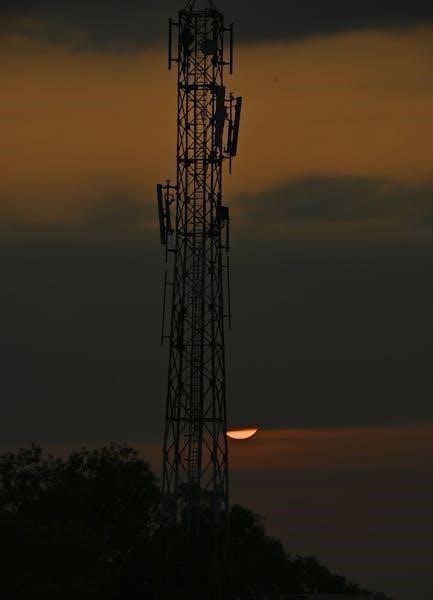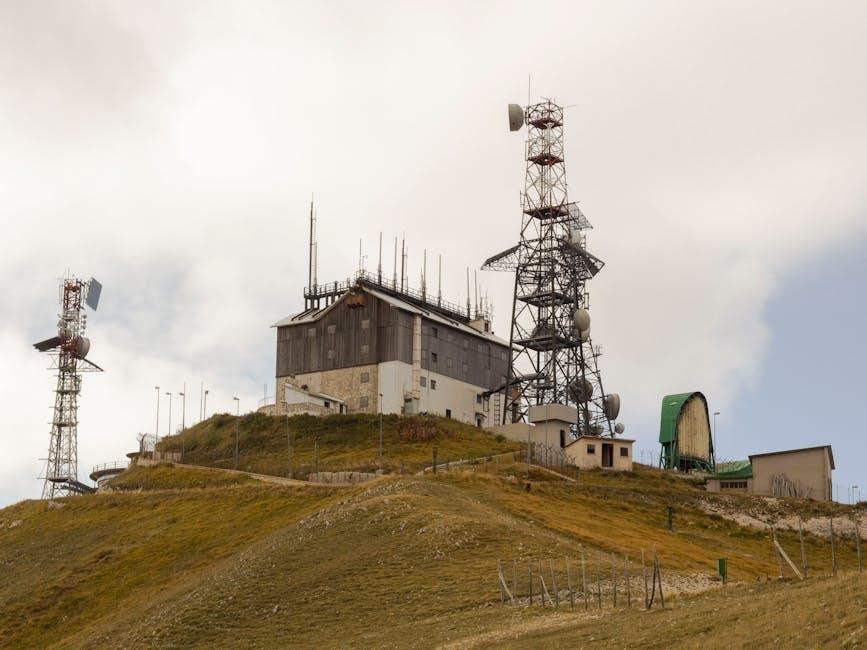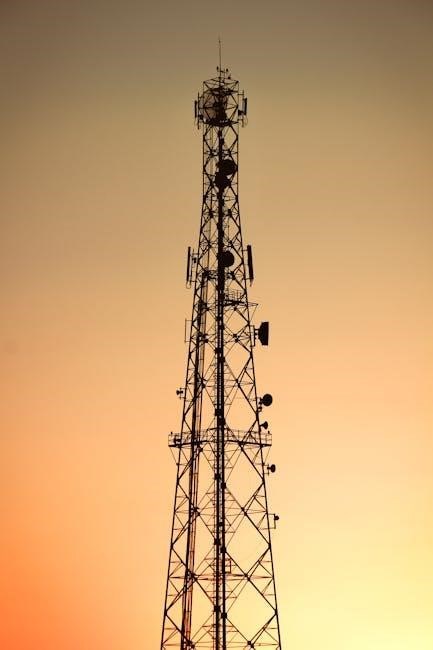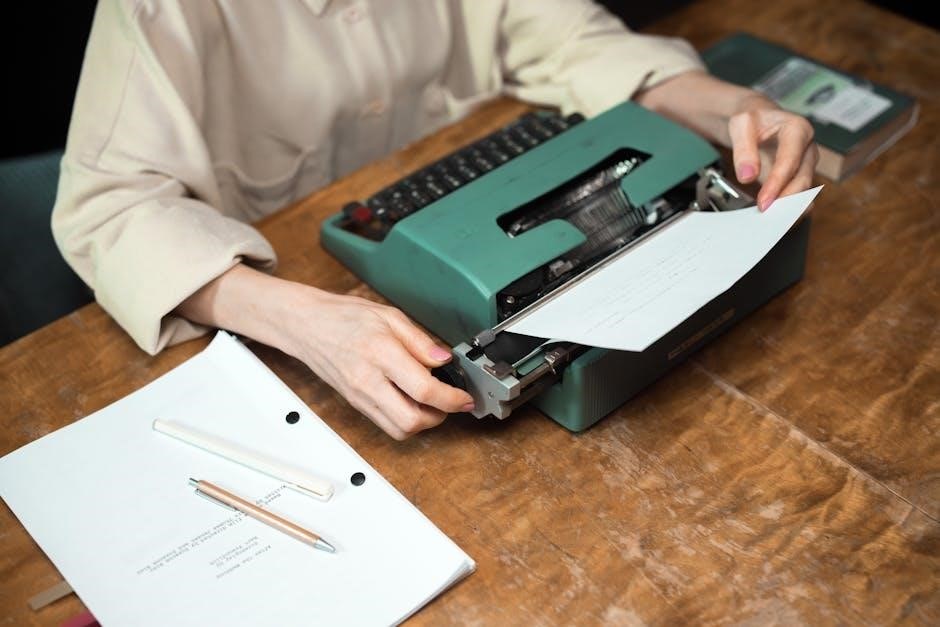
can you get a remote starter on a manual transmission
Curious about installing a remote starter in a manual transmission vehicle? While it’s feasible, the process presents unique challenges. This guide explores the possibilities, requirements, and safety considerations to help you make an informed decision.
What is a Remote Starter?
A remote starter is a device that allows you to start your vehicle’s engine from a distance, typically using a key fob or smartphone app. It is particularly useful for preheating or cooling the car before entry, enhancing comfort in extreme weather conditions. While commonly used with automatic transmissions, remote starters can also be adapted for manual transmissions with additional components. These systems often require a bypass module to simulate clutch engagement, ensuring safe and proper ignition without driver input. Safety features are crucial, as they prevent accidental starting unless the vehicle is in neutral or the parking brake is engaged. Compatibility varies, with brands like Compustar and Viper offering solutions for manual vehicles. Legal regulations may apply, and proper installation is essential for functionality and safety. Maintenance involves regular checks and potential software updates to ensure reliability. Overall, a remote starter offers convenience but requires careful consideration of its unique demands in manual transmission vehicles.
Why Consider a Remote Starter for a Manual Transmission Vehicle?
Installing a remote starter in a manual transmission vehicle offers unparalleled convenience and comfort. It eliminates the need to physically interact with the vehicle to start the engine, allowing you to preheat or cool the interior before entry. This is especially beneficial in extreme weather conditions, where a warm or cool car can significantly enhance your driving experience. Unlike automatic vehicles, manual transmissions require additional safety measures, such as bypassing the clutch safety switch, to ensure the system operates safely. Many modern remote starters are designed to work seamlessly with manual vehicles, offering features like reservation mode and neutral gear verification to prevent accidental movement. Additionally, remote starters can improve security by allowing you to start the car without leaving the safety of your home or office. For enthusiasts of manual transmissions, this technology bridges the gap between traditional driving and modern convenience, making it a worthwhile investment for enhanced comfort and functionality.
Can You Get a Remote Starter on a Manual Transmission?
Yes, it is possible to install a remote starter on a manual transmission vehicle. However, it requires specific modifications, such as a clutch bypass module, to ensure safe and proper operation. Professional installation is highly recommended to address these complexities effectively.
General Feasibility
Installing a remote starter on a manual transmission vehicle is feasible but more complex than with automatic transmissions. The primary challenge lies in the manual transmission’s reliance on the clutch pedal for starting the engine. To enable remote starting, the system must bypass the clutch safety switch, which normally prevents the engine from starting unless the clutch is pressed. This requires additional components, such as a clutch bypass module, to simulate the clutch engagement electronically. While this solution is effective, it introduces safety considerations, as improper installation could lead to unintended vehicle movement. Modern remote starters designed for manual transmissions often include features like roll prevention and reservation mode to ensure the vehicle remains stationary during remote start. Professional installation is highly recommended to address these complexities and ensure reliable operation. With the right components and proper setup, remote starters can function safely and effectively on manual transmission vehicles, offering the same convenience as those on automatics.
Specific Requirements for Manual Transmissions
When considering a remote starter for a manual transmission vehicle, specific requirements must be addressed to ensure functionality and safety. Unlike automatic transmissions, manual transmissions require additional components due to the clutch pedal’s role in starting the engine. A clutch bypass module is essential to simulate clutch engagement, allowing the engine to start remotely without physical pedal interaction. This module tricks the vehicle into thinking the clutch is pressed, enabling remote starting while maintaining safety protocols.
Moreover, features like roll prevention and reservation mode are crucial. Roll prevention ensures the vehicle remains stationary during remote start, preventing accidental movement. Reservation mode prepares the vehicle for starting without immediate engine activation, adding an extra layer of control. These features are often integrated into modern remote starters designed for manual transmissions, enhancing both convenience and safety.
Professional installation is highly recommended to handle these complexities effectively. The installer must ensure all components, including the bypass module, are correctly integrated into the vehicle’s electrical system. This expertise minimizes risks such as electrical damage or unintended vehicle behavior. By meeting these specific requirements, a remote starter can be reliably installed on a manual transmission vehicle, offering the desired convenience without compromising safety.
Understanding the Challenges
Remote starters for manual transmissions face unique challenges, primarily due to the clutch pedal’s role in engine starting. Bypassing the clutch safety switch is necessary, requiring additional components like a clutch bypass module to ensure safe and proper operation.
The Role of the Clutch in Manual Transmissions
In manual transmission vehicles, the clutch plays a critical role in controlling engine power delivery to the wheels. The clutch pedal must be pressed to disconnect the engine from the transmission, allowing the driver to shift gears smoothly. This mechanism is essential for starting the vehicle, as the engine cannot engage the transmission without the clutch being pressed.
When it comes to remote starters, the clutch presents a unique challenge. Unlike automatic transmissions, where the vehicle can transition into gear automatically, manual transmissions require the clutch pedal to be pressed to start the engine. This means that a remote starter must simulate the clutch pedal’s operation to initiate engine startup.
Without the clutch pedal being pressed, the vehicle’s safety features prevent the engine from starting, even with a remote starter. This necessitates the installation of additional components, such as a clutch bypass module, to safely mimic the clutch pedal’s action. This module ensures the vehicle can start remotely while maintaining proper safety protocols.
Bypassing the Clutch Safety Switch
Bypassing the clutch safety switch is a critical step when installing a remote starter in a manual transmission vehicle. The clutch safety switch is a feature designed to prevent the vehicle from starting unless the clutch pedal is pressed, ensuring safety during startup. However, this creates a challenge for remote starters, as the system cannot physically press the clutch pedal.
To address this, a clutch bypass module is typically required. This module simulates the clutch pedal’s action, allowing the vehicle to start remotely without manual intervention. The bypass module effectively tricks the vehicle’s computer into thinking the clutch pedal is pressed, thus disabling the safety switch’s restriction.
Modern remote starters often include specialized components, such as digital clutch bypass modules, to ensure safe and reliable operation. These modules are programmed to mimic the clutch’s engagement during remote start, eliminating the need for manual pedal input. Professional installation is highly recommended, as improper bypassing can lead to safety hazards or damage to the vehicle’s electrical system.
While bypassing the clutch safety switch adds complexity to the installation process, it is a necessary step to enable remote starting in manual transmission vehicles. Properly executed, this solution ensures both convenience and safety for drivers.
Additional Components Needed
Installing a remote starter in a manual transmission vehicle often requires additional components to ensure safe and proper operation. One key component is a neutral safety switch, which verifies that the vehicle is in neutral before allowing the engine to start. This switch is crucial for preventing accidental starts while in gear, which could lead to unintended vehicle movement.
Another essential component is a hood pin switch, which acts as a failsafe to prevent the engine from starting if the hood is open. This feature ensures that no one can access the engine while it is running remotely, enhancing overall safety. Additionally, some systems may require a GPS tracking module for added security, allowing owners to monitor their vehicle’s location and status remotely.
These components work together to address the unique challenges of manual transmissions and ensure the remote starter functions reliably; While basic remote starters exist, the extra requirements for manual vehicles necessitate these specialized parts to maintain safety and performance. Professional installation is highly recommended to ensure all components are correctly integrated and configured for optimal operation.

Safety Considerations
When considering a remote starter for a manual transmission vehicle, safety must be a top priority. The primary concern is ensuring the vehicle does not move unintentionally during remote starting. This requires careful integration of safety features to prevent accidents.
The most critical safety aspect is ensuring the vehicle is in neutral gear before the engine starts. A clutch bypass module is often necessary to simulate the clutch being pressed, allowing the engine to start without manual input. However, this must be paired with a reliable neutral safety switch to confirm the vehicle is in neutral and the parking brake is engaged.
Additionally, the system should include failsafes, such as automatic shutdown if the vehicle begins to move or if the brake pedal is pressed. These features ensure the remote starter operates safely and responsibly. It is also important to ensure the system is installed by a professional who can verify that all safety protocols are properly configured and functioning as intended.

Installation Considerations
Installing a remote starter in a manual transmission vehicle requires additional steps and components. A clutch bypass module is necessary to simulate clutch engagement, ensuring the engine starts safely. Professional installation is highly recommended due to the complexity of these systems.
Extra Steps for Manual Transmissions
Installing a remote starter in a manual transmission vehicle involves additional steps to ensure functionality and safety. A clutch bypass module is typically required to simulate clutch engagement, allowing the engine to start without physical clutch operation. This module tricks the vehicle’s system into thinking the clutch is pressed, enabling remote start functionality.
Another critical step is installing an additional neutral safety switch or ensuring the existing one is properly integrated with the remote starter. This ensures the vehicle is in neutral before the engine starts, preventing accidental movement. Some systems may also require a parking brake sensor to confirm the vehicle is securely parked.
These components must be carefully calibrated and tested to ensure they work in harmony with the remote starter. The complexity of these additional steps underscores the importance of professional installation to guarantee reliability and safety.
Importance of Professional Installation
Professional installation is crucial when adding a remote starter to a manual transmission vehicle due to the complexity of the process. Unlike automatic transmissions, manual vehicles require precise integration with components like the clutch safety switch and neutral safety switch; A professional installer ensures these systems are properly bypassed or integrated, preventing issues like accidental vehicle movement or engine damage.
DIY installations can lead to critical oversights, such as improper clutch simulation or faulty wiring, which may result in electrical system malfunctions or safety hazards. Professionals have the expertise to handle these challenges and ensure all components work seamlessly. They also have access to specialized tools and updated software for proper system calibration.
A properly installed remote starter guarantees reliability, safety, and optimal performance. Professionals minimize risks and ensure the system functions as intended, providing peace of mind and protecting your vehicle’s integrity. Additionally, many installers offer warranties and support, further enhancing the value of professional installation.
Choosing the Right Remote Starter
Selecting the right remote starter for a manual transmission involves ensuring compatibility and features tailored to your vehicle. Look for systems with clutch bypass modules and advanced integration capabilities. Popular models like Compustar and Viper offer reliable solutions for manual vehicles, ensuring seamless performance and safety.
Compatibility with Manual Transmissions
When selecting a remote starter for a manual transmission vehicle, compatibility is crucial. Not all remote starters are designed to work with manual transmissions due to the clutch pedal’s role in starting the engine. However, several high-quality models are specifically engineered for manual vehicles.
Brands like Compustar and Viper offer remote starters with advanced features tailored for manual transmissions. These systems often include a clutch bypass module, which safely simulates clutch engagement during remote start. This technology ensures the vehicle can start without manual intervention while maintaining safety protocols.
It’s essential to verify that the remote starter you choose is explicitly compatible with your vehicle’s make, model, and year. Some systems are designed for automatic transmissions only, so double-checking compatibility is vital. Additionally, look for features like reservation mode and neutral safety switch integration, which are critical for manual vehicles.
By selecting a remote starter designed for manual transmissions, you ensure proper functionality and safety. Always consult with a professional installer to confirm compatibility and proper installation procedures for your specific vehicle.
Popular Models for Manual Vehicles
When it comes to remote starters for manual transmission vehicles, several models stand out for their compatibility and performance. The Compustar Pro series is a top choice, offering advanced features like clutch bypass integration and smartphone app control. Its reservation mode ensures safe starting by verifying the vehicle is in neutral gear.
Another popular option is the Viper remote start system, which includes a digital clutch bypass module. This system is known for its reliability and seamless integration with manual transmissions, providing features like GPS tracking and two-way communication for added convenience and security.
The Excalibur 70 series is also widely recommended for manual vehicles. It offers a user-friendly interface and advanced safety protocols, including motion sensors to prevent unauthorized use. Additionally, the Avital brand is recognized for its affordability and ease of installation, making it a favorite among DIY enthusiasts.
These models are specifically designed to address the unique challenges of manual transmissions, ensuring safe and efficient remote starting. Always check compatibility with your vehicle’s make and model before purchasing, and consult a professional installer for proper setup and integration.
The Installation Process
Installing a remote starter in a manual transmission vehicle involves several key steps, requiring precision and understanding of the vehicle’s systems. First, the installer must disconnect the negative battery cable to ensure safety during the process. Next, the remote start module is connected to the vehicle’s wiring, including the ignition, starter, and clutch systems.
For manual transmissions, bypassing the clutch safety switch is essential to allow remote starting. This typically involves installing a clutch bypass module, which simulates the clutch pedal being pressed. The system must also verify that the vehicle is in neutral gear before starting, often achieved through a reservation mode or neutral safety switch integration.
Additional components, such as a digital clutch bypass or motion sensors, may be required to ensure safe operation. Once all connections are made, the system is programmed to recognize the vehicle’s specific parameters, such as gear position and ignition status.
Professional installers often perform a series of tests to ensure the remote starter operates correctly and safely. This includes verifying that the vehicle starts only in neutral gear and that all safety protocols are functioning as intended. Proper installation is critical to avoid potential risks and ensure reliable performance.

Common Challenges and Solutions
Installing a remote starter in a manual transmission vehicle presents unique challenges that require careful consideration. One major issue is the clutch safety switch, which prevents the engine from starting unless the clutch pedal is pressed. To resolve this, a clutch bypass module is often installed to simulate the clutch pedal being pressed, allowing the engine to start remotely.
Another challenge is ensuring the vehicle is in neutral gear before starting. This is typically addressed by integrating a neutral safety switch or using a reservation mode that verifies the transmission is in neutral. Additionally, motion sensors may be required to detect any movement of the vehicle during remote start, enhancing safety.
Some vehicles may also require extra programming to ensure compatibility with the remote start system, especially those with advanced push-button ignition systems. Professional installers often use specialized tools to configure these settings properly.
Despite these challenges, modern remote start systems are designed to handle manual transmissions effectively. With the right components and proper installation, these systems can function safely and reliably, offering the convenience of remote starting to manual transmission vehicle owners.
Cost Considerations
Installing a remote starter in a manual transmission vehicle can vary in cost depending on the system and installation complexity. Basic remote start systems for manual transmissions typically range from $200 to $500, while advanced models with features like smartphone integration or GPS tracking can cost between $400 and $1,000. Additional components, such as a clutch bypass module, may add $100 to $300 to the total cost, as these are often required for manual transmissions to ensure safe operation.
Labor costs for professional installation also play a significant role. While some enthusiasts attempt DIY installations, professionals are highly recommended for manual transmissions due to the complexity of bypassing the clutch safety switch and ensuring proper integration with the vehicle’s systems; Installation fees can range from $100 to $300, depending on the installer and the vehicle’s specific requirements.
Overall, the total cost for a remote starter on a manual transmission vehicle can range from $300 to $1,300, depending on the system chosen and installation needs. It’s important to consult with an authorized dealer or installer to get an accurate quote for your specific vehicle.
DIY vs. Professional Installation
When considering a remote starter for a manual transmission vehicle, the decision to install it yourself or hire a professional is crucial. DIY installation can be tempting for experienced enthusiasts, but it carries significant risks, especially with manual transmissions. The complexity of bypassing the clutch safety switch and ensuring proper system integration makes DIY installation challenging and potentially dangerous if not done correctly.
Professional installation, while more expensive, offers peace of mind and reliability. Experts have the tools and knowledge to safely bypass the clutch safety switch and ensure the remote starter operates seamlessly with your vehicle’s systems. They also handle wiring, programming, and testing, reducing the risk of electrical issues or system malfunctions.
Additionally, professional installers often provide warranties and support, protecting your investment. While DIY might save money upfront, the potential risks of improper installation, including damage to your vehicle’s electrical system or compromised safety features, make professional installation the recommended choice for most drivers.
Maintenance and Troubleshooting
Maintaining and troubleshooting a remote starter on a manual transmission vehicle requires attention to specific components and regular checks to ensure optimal performance. One key aspect is the clutch bypass module, which must be functioning correctly to prevent issues with remote starting. Regularly inspecting the wiring and connections is essential, as any damage or corrosion can lead to system malfunctions. Additionally, ensuring that the vehicle’s battery is in good condition is crucial, as a weak battery can prevent the remote starter from operating reliably.
When troubleshooting, common issues include failed remote starts, which could be due to incorrect installation of the clutch bypass or problems with the ignition system. It’s important to refer to the manufacturer’s guidelines for diagnostic procedures. Routine maintenance, such as software updates for the remote starter and ensuring compatibility with any aftermarket modifications, is also recommended to maintain functionality. Addressing these aspects helps ensure the remote starter continues to operate safely and efficiently on a manual transmission vehicle.

User Experiences and Reviews
Many vehicle owners have shared positive experiences with remote starters on manual transmissions, highlighting the convenience and comfort they provide. Users often praise systems like Compustar and Viper for their reliability and ease of use. For instance, a Subaru WRX owner noted how the Compustar system seamlessly integrated with their manual transmission, offering a hassle-free remote start experience. Similarly, a Jeep Wrangler owner with a manual transmission shared a video demonstration, showcasing how the Viper remote start system worked flawlessly after proper installation.
However, some users have reported challenges, particularly with DIY installations. A common issue mentioned is the need for precise clutch bypass settings to avoid false starts or engine stalls. Despite these hurdles, many agree that the benefits of remote starting, especially in extreme weather conditions, outweigh the initial setup complexities. Reviews often emphasize the importance of professional installation to ensure safety and functionality.
Overall, user feedback underscores the feasibility and convenience of remote starters for manual transmissions, provided the system is installed correctly and maintained regularly. Owners consistently highlight the value of these systems for enhancing their driving experience.
While DIY installation is an option for experienced individuals, many recommend seeking a professional to handle the complexities, especially the clutch bypass connection. The benefits of a remote starter, such as convenience and comfort in extreme weather, make the effort worthwhile for many manual transmission owners. However, it’s crucial to choose a compatible system and adhere to safety guidelines to ensure reliable performance. Ultimately, with the right system and installation, a remote starter can enhance the driving experience for manual transmission vehicle owners, offering both functionality and peace of mind.
Related Posts

walther pdp manual
Need a Walther PDP manual? Find all the official manuals, quick start guides, and troubleshooting tips right here! Keep your firearm running smoothly. Download now!

whirlpool thin twin user manual
Get the Whirlpool Thin Twin user manual for easy setup, maintenance, and troubleshooting. Your ultimate guide to optimal performance!

braun thermoscan manual
Get the Braun Thermoscan manual for easy temperature taking. Your comprehensive guide to using the Braun Thermoscan thermometer effectively.